On December 19, 2017, the United States and Canada said that nations from around the world would convene January 16 to show solidarity against North Korea’s nuclear program.
U.S. Secretary of State Rex Tillerson and Canadian Foreign Minister Chrystia Freeland, meeting in Ottawa, said the meeting would take place in Vancouver.
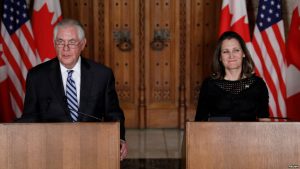
The meeting will involve the “sending states” that sent forces as part of a U.N. command to support South Korea during the Korean War. They’ll be joined by additional countries, including Japan, South Korea and India.
Tillerson said the meeting would seek to advance the pressure campaign on North Korea and send a unified message that the global community won’t accept the North’s becoming a nuclear state. He said the pressure campaign would keep intensifying.
https://www.voanews.com/a/nations-hold-north-korea-meeting-in-canada-in-january/4171272.html
What follows is an article by Danny Lam which looks at the agenda for the meeting and the challenges to be met by the “sending states.”
2017-12-28 By Danny Lam
Canada and the United States agreed on November 28, 2017 to co-host a meeting of the United Nations Command “sending states, ROK, Japan and other key affected countries.”
Initially, Chrystia Freeland, Canada’s foreign minister and her Global Affairs staff, took that to mean she can invite whomever she liked including PRC and maybe Cuba.
PM Trudeau have praised Castro’s Cuba for their close relationship with North Korea and viewed them as a valuable channel toward a peaceful settlement of the Korean problem for our time.
When Japan rejected Canada’s overtures and effectively declined to participate in a United Front Campaign advocated by Canada that almost certainly would have led to a dialog for the PRC and Russia’s proposal for “freeze for freeze”, the US had to step in.
US Ambassador to China Terry Branstad unilaterally announced in Canton that Secretary Tillerson will travel to Canada and meet with PM Trudeau and Minister Freeland on the North Korea crisis on December 19th, delaying the “sending states” meeting from mid-December to mid-January.
Secretary Tillerson reset the direction and purpose of the meeting during the December bilateral meeting with Canada by stipulating that the meeting are between the “sending states” plus ROK, Japan, India, Sweden and others that Secretary of Tillerson think are important to engage.
Notably, this excluded PRC, Cuba, Russia and North Korea. Communist China had to be disinvited by Canada.
The Hon. Mr. Tillerson described the purpose of the UN Command “Sending States” meeting as,
“[H]ow do we improve the effectiveness of the current pressure campaign? Are there other steps that could be taken to put additional pressure on the regime in North Korea, and how do we further take our diplomatic efforts forward? And then how do we prepare for the prospects of talk[s]?”
The purpose of the meeting is clearly about ratcheting up the pressure leading to DPRK entering negotiations for denuclearization in good faith.
It is a last ditch effort prior to military options.
An unspoken goal of the meeting is to cement and firm up a consensus that North Korea is an imminent existential threat that endanger the liberal international order, and not just a regional security problem for South Korea, Japan and the United States that must be resolved before it becomes too risky for a military option.
US officials must educate and inform the participants at the meeting on the extent of DPRK’s threat and how the US Government arrived at their consensus view that:
“North Korea’s pursuit of nuclear weapons has aggressive and offensive objectives. Pyongyang, they believe, will use its nuclear weapons to push U.S. forces out of South Korea and then force reunification of the Korean Peninsula on its terms.”
In other words, North Korea was, is, and will not be a status quo nuclear power that treat their nuclear arsenal as a defensive tool to guarantee regime survival.
DPRK’s nuclear arsenal is intended for offensive purposes to alter the status quo of not just the Korean peninsula, but the liberal world order.
This perspective would come as no surprise to anyone who fought the Korean war.
But very few (if any) officials attending the UNC Sending States meeting in Vancouver on Jan 16, 2018 have firsthand experience from that distant conflict.
Fading memories of the Korean war, together with a very active propaganda campaign by DPRK and PRC that portrays them as the “winners” of the Korean war, and the rise of the PRC as a successful communist peer competitor to the allies, have distorted the perception of the conflict since 1953.
Almost all the participants count the PRC as their top (or major) trading partner and is deeply concerned with upsetting the CCP.
PM Trudeau, in particular, failed to appease President Xi and Premier Li in December when he and his ministers was widely expected to be offered a Free Trade Deal.
Instead, he left virtually empty handed without securing the release of any Canadian prisoners or selling one Bombardier C-Series jet, not to mention having a joint press conference with Premier Li abruptly cancelled.
Managing the PRC’s relationship with the sending states and allies will be a key problem on the agenda.
A critical task before the meeting convenes is to refresh the participants and institutional memories of the UNC Sending States of what is really at stake when they collectively signed the 1953 Armistice Agreement.
This agreement is no less binding and enforceable than the Charter of the United Nations (1946) and other treaties that formally ended WWII. It commits sending states to defend the RoK against aggression by the Korean People’s Army and Chinese People’s “Volunteers”.
Few (if any) officials and politicians who are belligerent “sending states” except the USA recognize their legal obligations.
Or their liability for “compensation” currently demanded by DPRK.
Armistice do not formally end armed conflict.
Peace treaties need to be concluded between belligerents that include, in theory, all members of the UN against the (then) non-recognized regimes of PRC and DPRK. Without a peace treaty, the armistice can be ended legally by a party denouncing it and / or by any party restarting hostilities.
DPRK have denounced the armistice in 1994, 1996, 2003, 2006, 2009, 2013 and most recently argued that the US has “effectively declared war” with UN sanctions. North Korea’s position in turn, enable them to restart hostilities at any time without notice: consistent with their past behavior.
North Korea’s actions have provided UN forces with ample justification to resume hostilities.
Resumption of hostilities by UNC will not, in this case, be regarded as pre-emptive war as such action presumes that a state of peace exist a priori.
The question is: under what circumstances might the UN Command resume hostilities legally beyond the use of force to uphold the Armistice?
All states have an inherent right of individual and collective self-defense providing that such actions meet the criteria for necessity and proportionality.
DPRK’s overt threats to the US and other states homeland, and the development of “push button” WMD capabilities during the past decade greatly strengthen the allied arguments in favor of military action for self-defense.
Specifically, DPRK’s development of solid fueled ballistic missiles that is capable of being launched with little warning, together with their intent to develop MIRV, MARV capabilities and announced goal of orbiting large satellites that can be fitted with nuclear warhead payloads, all point to highly destabilizing actions that enable surprise “knock out” attacks on allies with little warning.
North Korea will, in a few years, be able to hold most nations “at risk” from surprise attack with no or very little (i.e. 30 minutes) warning if their intentions and motivations as elucidated by top DPRK officials is taken seriously.
Many UNC sending states, like Canada, have not taken NK threats seriously and preferred to wish that they are neutral parties.
In the case of Canada, gullible and naïve officials and sycophants have taken assurances from DPRK officials at face value that Canada “is not a target” using fanciful “proof” like DPRK’s public “target maps” as “evidence”.
Like that Austrian corporal’s intentions and motives are interpreted in such a benign manner up to 1939.
Secretary Tillerson must marshal sufficient credible, disclosable intelligence at this meeting to persuade and align the allied consensus toward the actual present and future danger from DPRK.
At the same time, inform and educate the participants on US capabilities and viable, good, military options for eliminating the threat should diplomacy fail.
“Sending States” no longer just have their expeditionary forces at risk (if they send any this time), but their homelands are potentially all at risk from DPRK nuclear attack which can happen without warning. It is no longer a simple matter to defend the Armistice but to defend all our homelands and to prevent extortion by a nuclear armed state backed by revisionist powers communist PRC and Russia.
The threat will only metalized over time as DPRK export WMDs worldwide.
Any discussion of enhancing pressure on North Korea with the goal to “bring them to the negotiating table” must be cognizant of the fact that such pressure can have the perverse effect of DPRK restarting the war with their nuclear arsenal — at any or all of the “sending states” and allies.
Recall this is how Japan responded to “pressure”, sanctions and the US oil embargo at Pearl Harbor. Japan was not deterred by the prospect of ultimately losing and thought they can negotiate a peace with a strong hand after their initial victories.
Could North Korea think similarly?
The question of increasing pressure will also expose the extent to which many allied nations have indifferently or not at all been serious about applying sanctions against DPRK.
For example, Canada, the co-host of this conference, have failed to implement any secondary sanctions on PRC and Russian entities and individuals (or those from other countries) that are well known NK agents or conduits to evade sanctions.
A self-study on this intentional Canadian “blind eye” is long overdue and essential before the conference.
Discussions need to be initiated for a consensus on mutual defense and mutual offense options should the pressure campaign fail to bring North Korea to the negotiating table expeditiously.
It is very hard to imagine a pressure campaign that is not backed by credible military force have any chance of success.
A sending states and allied consensus on the conditions and timeline for the use of force would be a welcome outcome and major achievement for this meeting.
Mutual defense require sending states that are very exposed and high value targets like Canada or New Zealand that are not presently participating in the Ballistic Missile Defense System to take the opportunity to expedite joining as quickly as possible.
Or be knowingly and willingly exposed to the risk and consequences as DPRK develop the capability to defeat or overwhelm defenses available to them.
All participating states need to be prepared for a discussion as to what they can and will contribute, including diplomatic, economic and military assets, for a lasting solution to denuclearize the Korean peninsula.
A difficult and full agenda every bit or more important and critical as the Munich conference (1938).
Editor’s Note: If you wish to comment on this article, see the following:



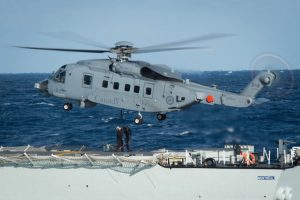 Canada’s CH-148 Cyclone maritime helicopters are now well into test and evaluation. Crews are reportedly impressed with their anti-submarine and above-water warfare suites. MCpl Jennifer Kusche Photo
Canada’s CH-148 Cyclone maritime helicopters are now well into test and evaluation. Crews are reportedly impressed with their anti-submarine and above-water warfare suites. MCpl Jennifer Kusche Photo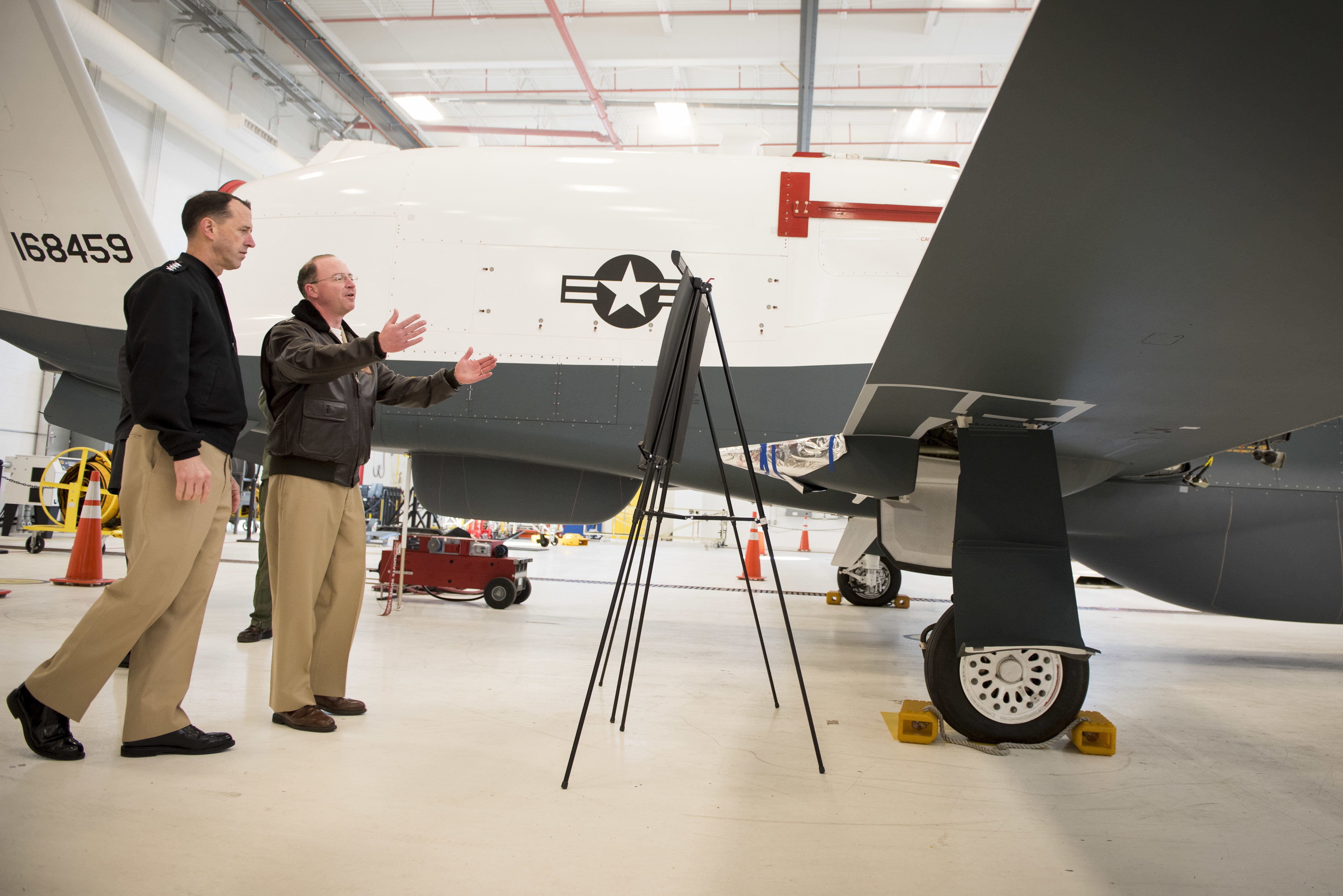
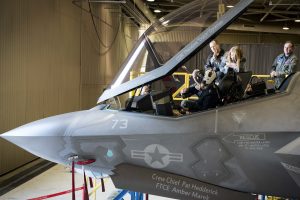 PATUXENT RIVER Md. (Jan. 13, 2016) Chief of Naval Operations (CNO) Adm. John Richardson sits in the cockpit of an F-35C Lightning II carrier variant joint strike fighter at Naval Air Station Patuxent River. Richardson also held an all-hands call, toured facilities and viewed aircraft and systems including the E-2D Advanced Hawkeye and MQ-4C Triton unmanned aircraft system. (U.S. Navy photo by Mass Communication Specialist 1st Class Nathan Laird/Released)
PATUXENT RIVER Md. (Jan. 13, 2016) Chief of Naval Operations (CNO) Adm. John Richardson sits in the cockpit of an F-35C Lightning II carrier variant joint strike fighter at Naval Air Station Patuxent River. Richardson also held an all-hands call, toured facilities and viewed aircraft and systems including the E-2D Advanced Hawkeye and MQ-4C Triton unmanned aircraft system. (U.S. Navy photo by Mass Communication Specialist 1st Class Nathan Laird/Released)

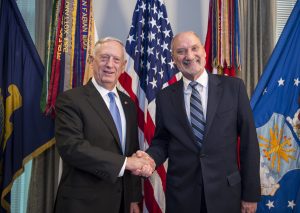 Secretary of Defense Jim Mattis hosts a bilateral meeting for Poland’s Minister of Defense Antoni Macierewicz Sept. 21, 2017, at the Pentagon in Washington, D.C. (DOD photo by Air Force Tech. Sgt. Brigitte N. Brantley)
Secretary of Defense Jim Mattis hosts a bilateral meeting for Poland’s Minister of Defense Antoni Macierewicz Sept. 21, 2017, at the Pentagon in Washington, D.C. (DOD photo by Air Force Tech. Sgt. Brigitte N. Brantley)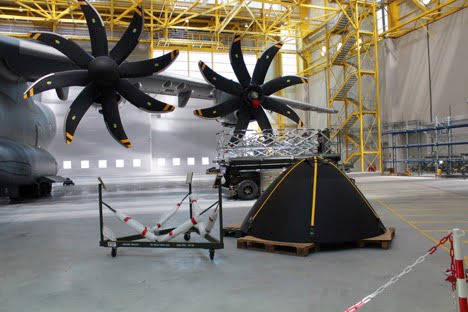
 Changing business rules allows for strategic redirection and agile evolution of the combat force. Credit Graphic: IBM
Changing business rules allows for strategic redirection and agile evolution of the combat force. Credit Graphic: IBM